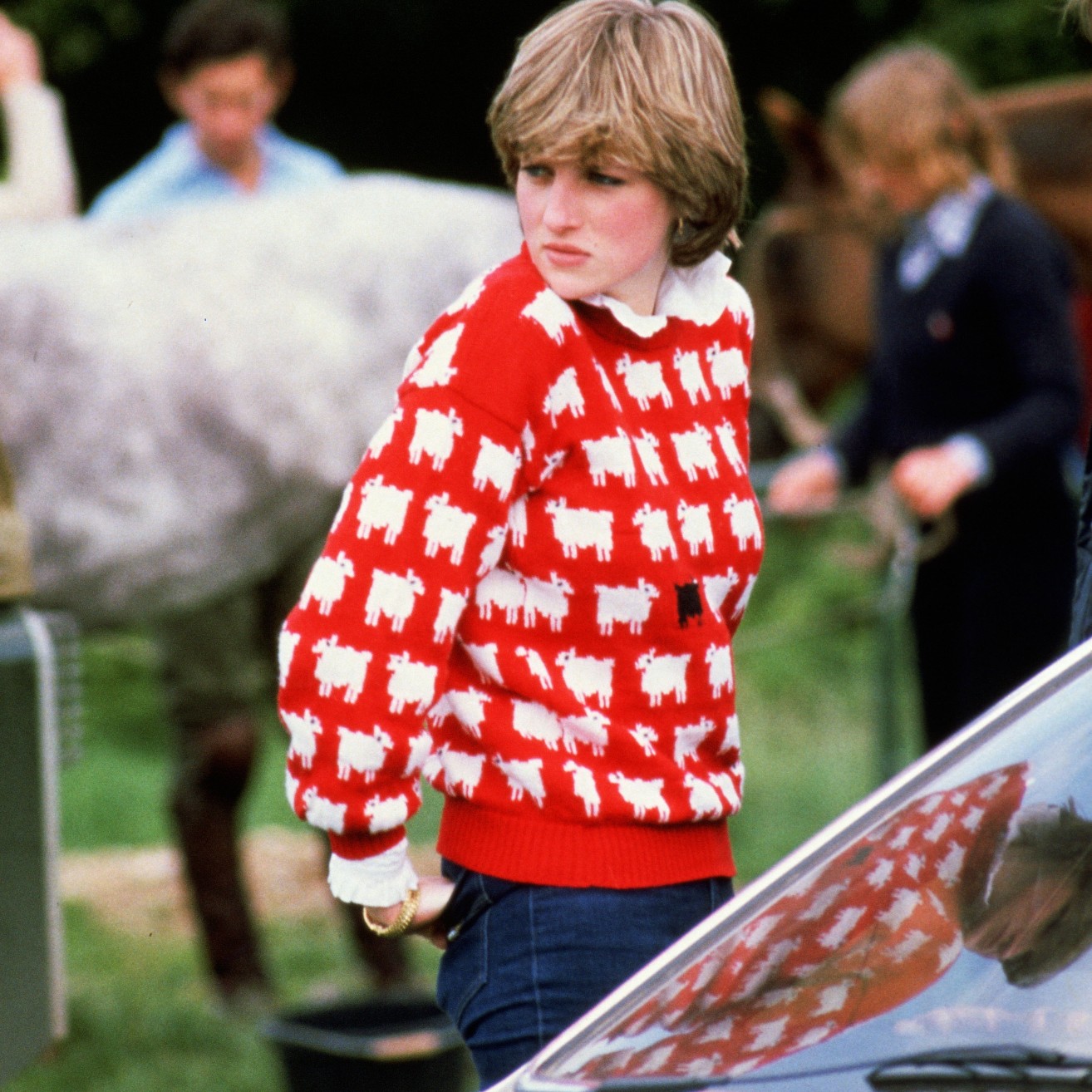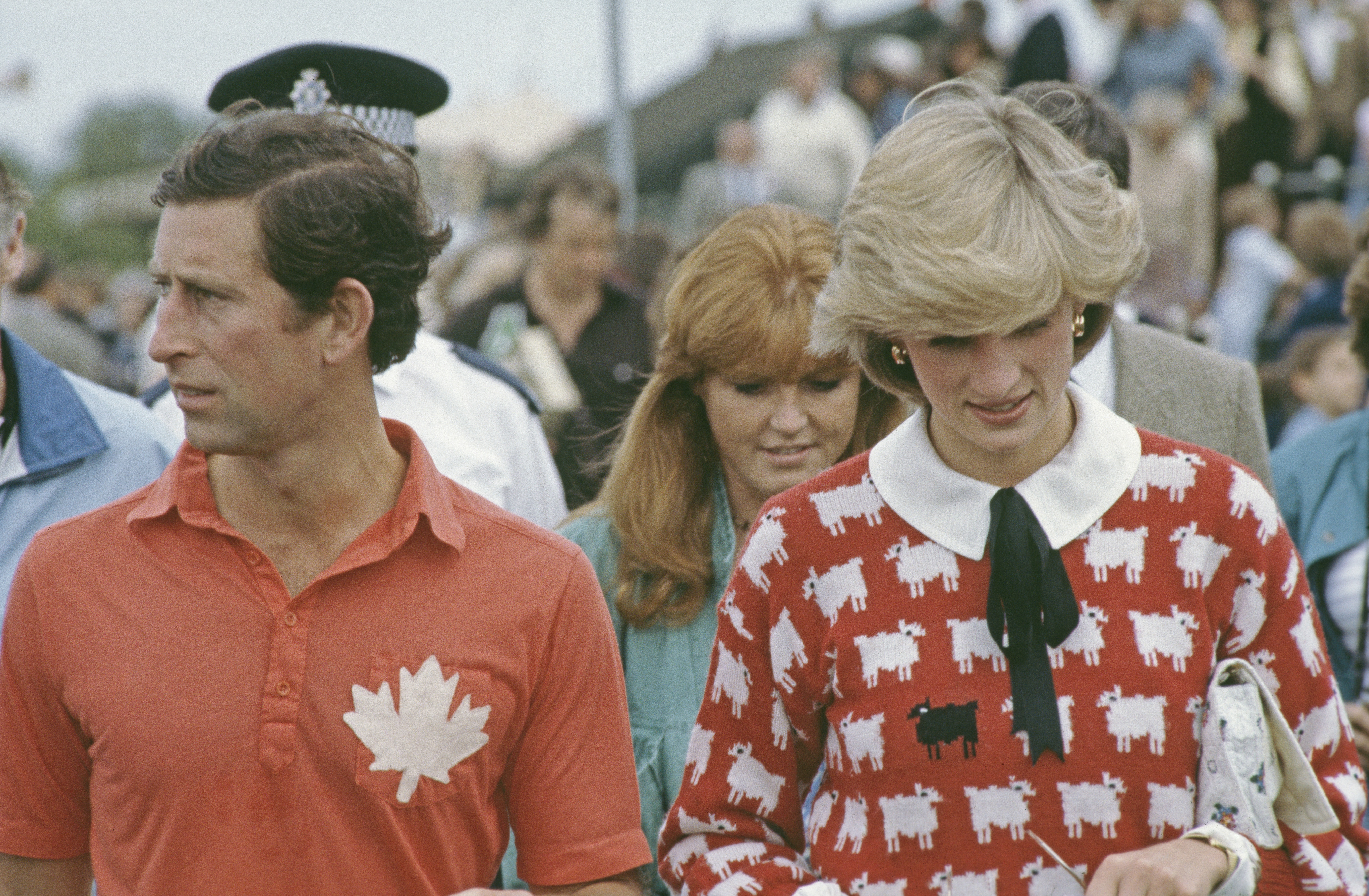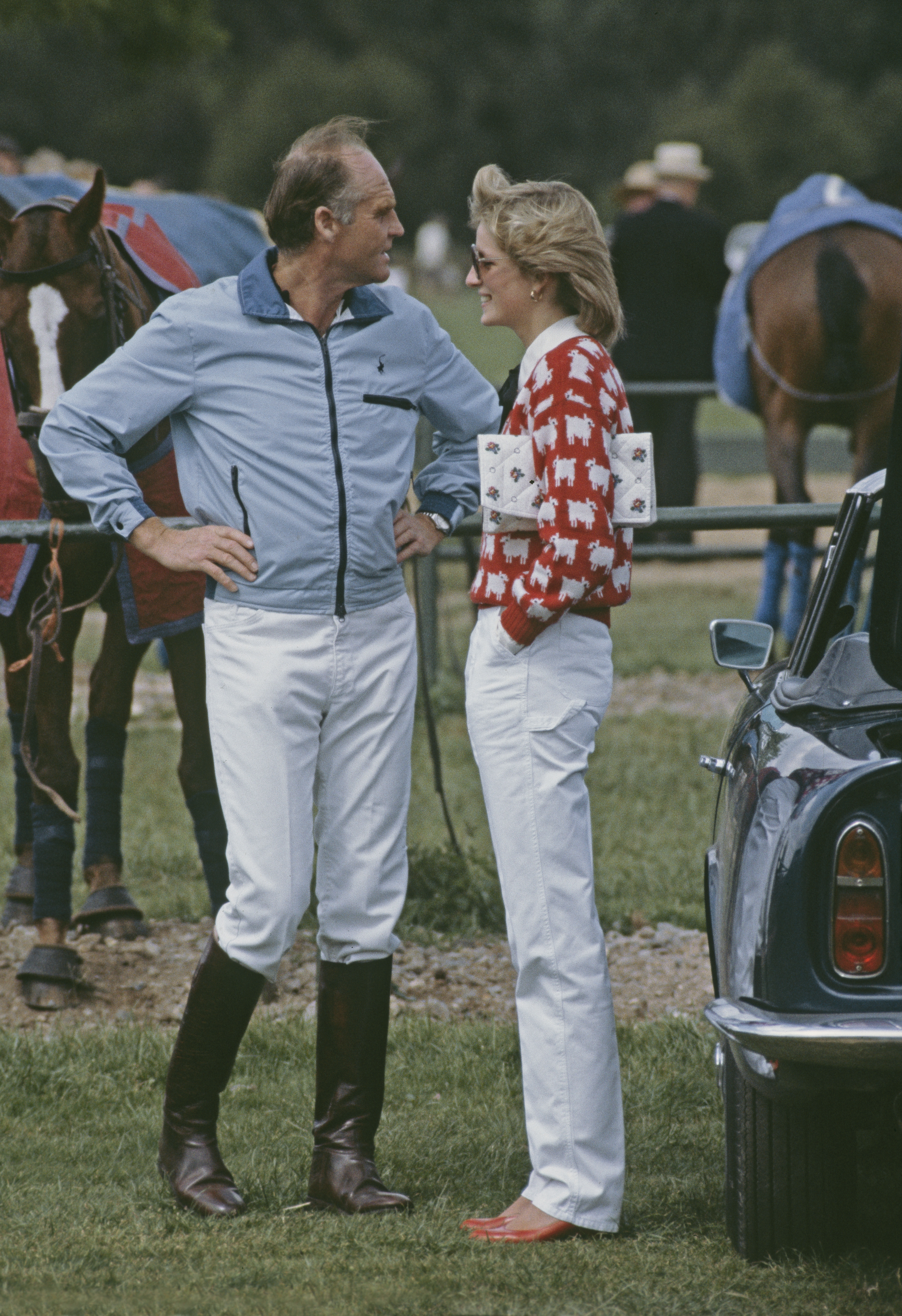
The symbolism couldn’t have been more in your face: Princess Diana—who, like royals who have come after her, used clothing to send clear messages to the public—in her now iconic black sheep sweater, worn for the first time in the summer of 1981. The red and white wool Sheep Sweater by knitwear label Warm & Wonderful conveyed without saying a word that Diana was a different kind of royal—a black sheep amongst the family, if you will—and instantly became a piece of fashion lore. Worn the month before she married the then Prince Charles in June 1981 at a summer polo match, Diana’s prediction that she would be the “black sheep” of the family proved entirely too prescient.
This morning, Sotheby’s announced that the sweater will be offered this September in New York in its inaugural Fashion Icons auction—available at auction for the very first time. Sotheby’s Global Head of Fashion and Accessories Cynthia Houlton told Marie Claire exclusively that the piece jumpstarted the princess’ reputation as a global fashion icon.


“The sweater sparked conversations amongst both the media and the general public as to what message she was trying to send the world,” she said. “As one of the most photographed women of all time, she made a distinct decision to wear this design not once, but twice in a public setting—further alluding that it was a deeply personal item to ‘the People’s Princess.’ There was, of course, speculation from all parties as to whether Diana resonated specifically with the lone, black sheep prominently placed on the front of the sweater.”
After that first wearing—when the public and the media were still getting to know a 19-year-old named Diana Spencer—the look was carefully dissected, spurring conversations and becoming a cultural moment. It was one of the first pieces created by Warm & Wonderful’s duo Sally Muir and Joanna Osborne, and the sweater took the world by storm—the advertisement of a lifetime that launched their business into the stratosphere.



Not long after Diana’s appearance in the sweater, Muir and Osborne received an official letter from none other than Buckingham Palace, politely explaining that Diana had damaged her much-loved Sheep Sweater—and could she have either a repair or a replacement? A new sweater was knitted entirely, and the two later received a grateful thank-you letter from Diana’s private secretary. Before Princess Kate made rewears a normal occurrence for royals, Diana broke the rules—as any good black sheep does—and wore the sweater a second time, this time in 1983. The piece became such a part of history that a Sheep Sweater of the same design resides in the permanent collection at the Victoria and Albert Museum in London.
“Princess Diana’s wardrobe often pushed the boundaries of societal norms at the time and had a unique way of transcending her personality through to the public,” Houlton said. “Her style was always deliberate, and she often effortlessly linked modern, fashion-forward pieces with the most extravagant garments. This sweater is notable for a multitude of reasons, as it is associated with Princess Diana’s youth and entry into the public eye and reflective of her complex relationship with the royal family.”

Warm & Wonderful stopped producing the Sheep Sweater in 1994, but reissued the design again in 2020. That same year, a replica of the sweater appeared in the fourth season of Netflix’s The Crown, worn by actress Emma Corrin playing Diana.
The whereabouts of the original 1981 sweater had been unknown until it was rediscovered this past March by Muir and Osborne in their attic, tucked away in a small box. Now, it’s headed to Sotheby’s, with online bidding open from August 31 to September 14 during New York Fashion Week and displayed in New York beginning on September 7.

“Sotheby’s is honored to be entrusted with this beloved design and emblem of royal history and to bring this incredible story to the forefront,” Houlton said.
The auction house currently holds the record for the most valuable Diana dress ever sold and also sold Diana’s Attallah Cross to Kim Kardashian this past January.







